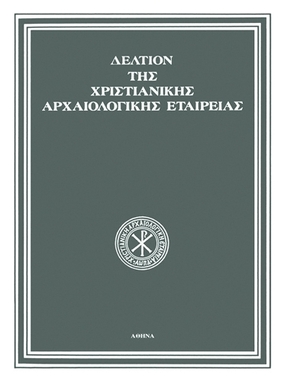Η φραγκοβυζαντινή εκκλησία της Θεοτόκου στο Ανήλιο (τ. Γκλάτσα) της Ηλείας
Part of : Δελτίον της Χριστιανικής Αρχαιολογικής Εταιρείας ; Vol.30, 1986, pages 239-264
Issue:
Pages:
239-264
Parallel Title:
The Franco-Byzantine Church of the Virgin at Anhelion (Glatsa), in Elis
Section Title:
Articles
Abstract:
The building activity in Peloponnesus during the 13th century has two interesting aspects: on one hand the raising of some great churches of purely Gothic style and on the other the building of smaller Orthodox churches which continued the local Byzantine tradition and in some cases adopted some architectural forms from the West. The study of Byzantine architecture in Greece during the 13th century and of its relations with the social status of builders is very difficult because of the limited number of monuments, lack of information in the written sources and their approximate dating. One of the monuments which seem to fall within these limits is the church of the Virgin, close to the village Anhelion, sometimes called Glatsa, in Elis. The study of the church begins with the documentation and the description. The monument is now in ruins, and in a very poor state of preservation. It is a three aisled building, with narthex and bema. Only the eastern part of it preserves its original height. No texts or inscriptions are related to the monument. A thorough study of the remains of the building, some dispersed architectural members, and a number of old photographs of the German Archaeological Institute, made possible the restoration drawings of the building. It is clear that the church of the Virgin was a three aisled timber roofed basilica with a vaulted narthex and tripartite vaulted sanctuary, of modest proportions. Some of its architectural features (interior proskynetaria, string courses, cornices and doorframes) have an undisputable Gothic character, but some others (type of masonry, dentil courses, interior cornices, windows of the apses) fit well with the established architectural vocabulary of 12th century Greece. The church of Anhelion is another example of timber roofed basilica in Greece and can be added to a list of ten other Middle Byzantine churches of the same type which have been studied these last years. This proves, in spite of older theories, that the Early Christian basilical plan, drastically reduced in scale, continued to be employed in Hellas and Peloponnesus in the Middle Byzantine period. Stylistic and structural features suggest a close relation between the church of the Virgin and the Byzantine monuments of late 12th century in Greece. More specifically, the church of the Virgin displays close similarities with two other monuments of western Peloponnesus, that is the catholicon of the Vlachernae monastery in Elis and the chapel of Saint George outside the castle of Androussa. It is fairly possible that all the three monuments were built by the same architect or the same group of builders. The precise date of the church of Anhelion is not known. The two relative monuments mentioned above are only approximately dated. It is possible that all three were built in the early 13th century.
Subject:
Subject (LC):




